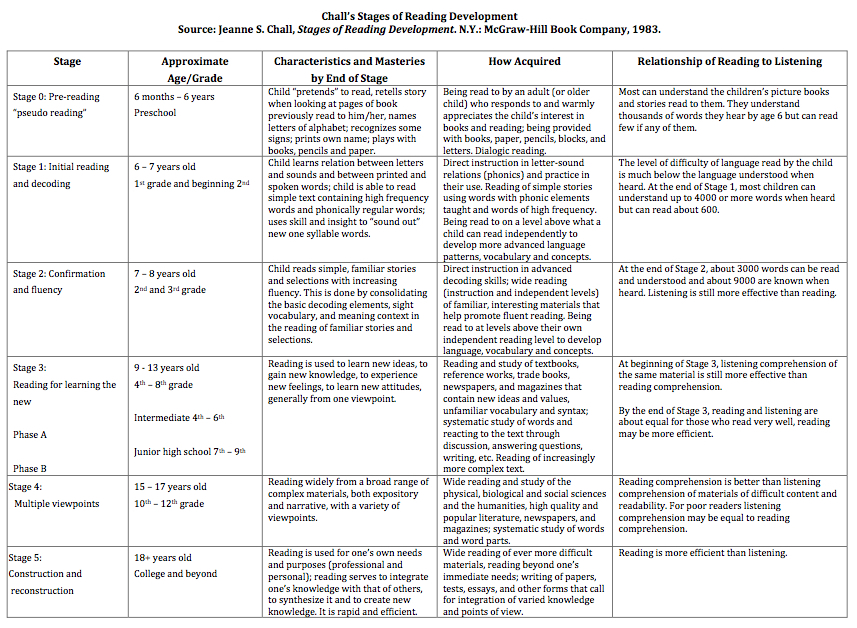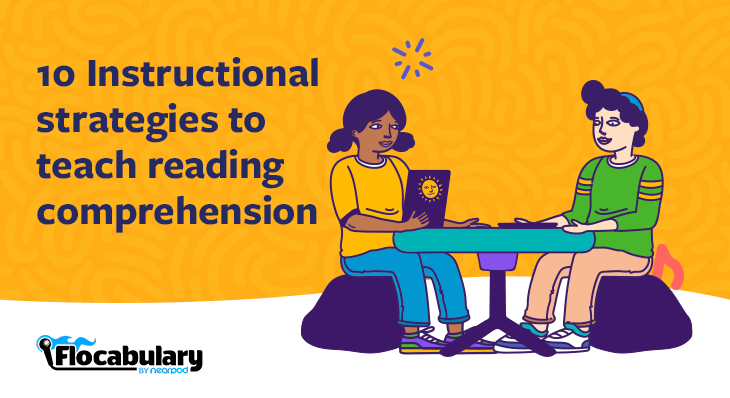
10 Instructional strategies to teach reading comprehension
One of the first pieces of advice a teacher will tell a parent is to read to your child; read early and often. This tip is fundamental to helping them develop a love of reading and an understanding of print concepts. Even before kids can read on their own, they can appreciate the art of storytelling. They can also gain familiarity with print concepts: knowing how to hold a book and turn a page, and learning how to read left to right.
Later, as they develop their decoding skills, they will begin extracting or deducing meaning from the written word. Reading comprehension skills require the reader and listener to not just decode the words, but understand the meaning of those words. These skills include recalling details, analyzing information, making inferences, making connections, and drawing conclusions. Early on, emergent readers begin to understand that words and pictures hold meaning; how those meanings come together are the elements of reading comprehension. Many educators ponder how best to teach reading comprehension so students develop strong literacy skills.
What are the levels of reading comprehension?
When diving into the Science of Reading (SOR), don’t neglect how to teach reading comprehension in favor of just cementing phonemic awareness and fluency skills. On average, 25% of early elementary students struggle with reading comprehension. Chall (1996) describes how reading comprehension is woven throughout the six stages of reading development—Stages 0-5: Pre-reading, Initial reading, Confirmation and fluency, Reading for learning the new, Multiple viewpoints, Construction and reconstruction. In general, it is helpful to consider how to guide students from “learning to read” (print concepts, phonological awareness, phonemic awareness, phonics) to “reading to learn” (background knowledge, comprehension). Whatever your approach, the dynamic and complex process of learning to read requires an intricate web of skill development.
Reading comprehension lessons, videos, and activities on Flocabulary
When teaching reading, reading comprehension is core and key to literacy skills as they span all curricular areas—from stories in English Language Arts (ELA) to informational texts in science and history to word problems in math, just to name a few applications. Flocabulary’s 1,300+ video-based lessons with activities support vocabulary acquisition and comprehension skills across K-12 subjects. These high-quality videos captivate students and create an impactful and memorable learning experience by harnessing the power of hip-hop music, visual art, storytelling, humor, drama, and poetry. Each video-based lesson includes a suite of instructional activities that provide additional practice at varying levels of rigor to scaffold instruction.
Richmond Public Schools (RPS) faced the challenge of maintaining student motivation while meeting proficiency standards. Through their adoption of Flocabulary, they transformed their approach to comprehension and vocabulary instruction, resulting in impressive improvements. With a 75% increase in reading scores and a remarkable 90% progress in math, RPS demonstrated that when students are engaged and equipped with the right tools, academic success follows.
Here’s an example of the type of videos you can find on Flocabulary!
There are many methods of teaching reading comprehension. It’s essential for ELA teachers to tackle reading comprehension strategies head-on while reiterating and reinforcing them. Keep reading to explore instructional strategies for reading comprehension using impactful tools like Flocabulary.
New to Flocabulary? Teachers can sign up for a trial to access our lesson videos and assessment activities. Administrators can get in touch with us to learn more about unlocking the full power of Flocabulary through Flocabulary Plus.
2025 What Kids Are Reading Report: Research-Based Insights for Reading Comprehension Instruction
The 2025 What Kids Are Reading report—the world’s largest annual study of K-12 student reading habits—provides valuable data to inform your comprehension instruction strategies.
Key findings in this year’s report reveal:
- Evidence that just 15 minutes of daily reading significantly improves comprehension outcomes across all grade levels
- The most engaging texts at each grade level that successfully support comprehension development
- Book recommendations aligned with Chall’s stages of reading development
- Popular titles that effectively bridge the transition from “learning to read” to “reading to learn”
- Teacher-recommended series that builds background knowledge while maintaining student engagement
This comprehensive report offers evidence-based insights to enhance your reading comprehension instruction and help you select texts that will resonate with today’s students.
10 Instructional strategies for teaching reading comprehension
1. Preview stories and make predictions
Before reading a new story, do a quick picture walk to see how students use the illustrations to make predictions about the plot line. Even if their predictions are not correct, they will be making real-world connections to their prior knowledge and personal experiences, and they will be comparing and contrasting the story to their own knowledge and experience from that point on.
Consider exploring the many stories within Flocabulary’s Literature Videos & Lessons library that you can engage with as a class. You can also share the lesson as personalized content for individual students.
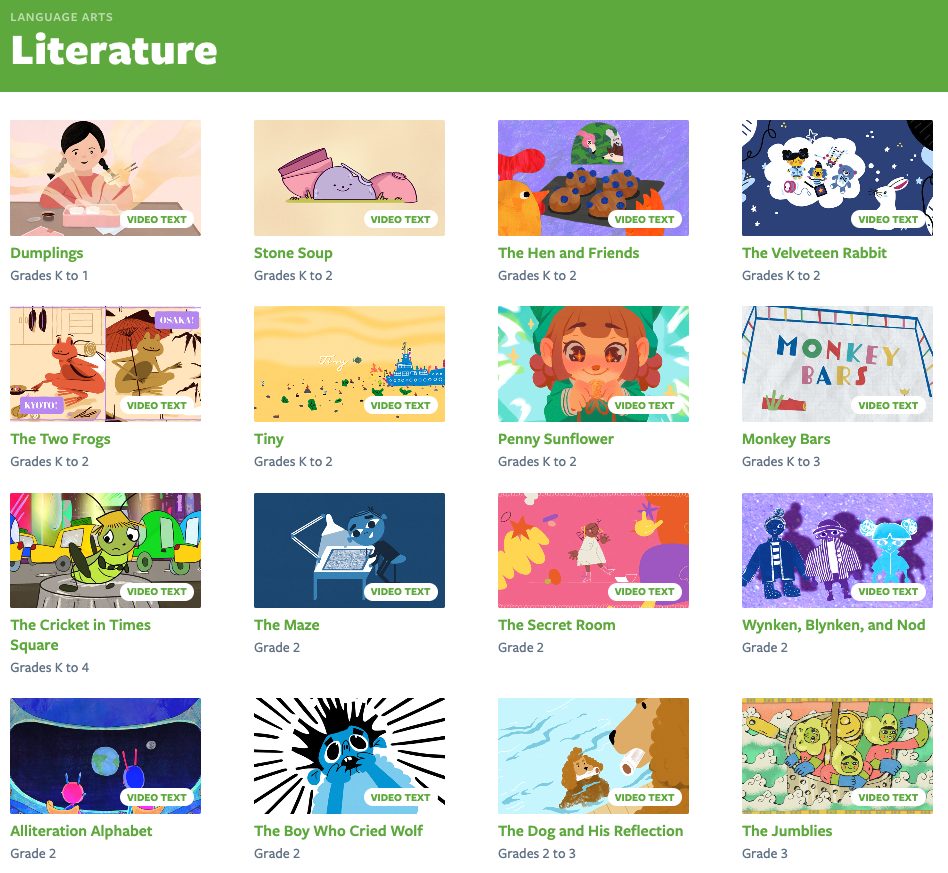
2. Devote time to reading aloud
Read aloud, full stop. First, make sure you read aloud often to your students, regardless of their age, for reading instruction. Model the sounds, the structure, and the cadence of storytelling. Then, encourage students to read aloud to you, to each other, and to younger grades. Reading aloud requires readers to slow down and digest what is being said. When kids can read aloud well, such skills underscore that they understand what is being said or described using letters and sounds. Plus, when they can add inflection to their reading, they are following cues given by the text’s sentence structure and use of punctuation.
Flocabulary’s lessons engage readers of all skill levels with the rich audio tracks’ rhythmic structure and rhyming verse. Such play with words disrupts an expected sentence structure and helps readers develop figurative language skills (when words have layers of meaning beyond the literal). Flocabulary’s Lyric Lab is an academic rhyme-writing activity that deepens students’ vocabulary and writing skills. Students can lean on the built-in rhyme generator for extended word play.
You can also help students practice reading by enabling Immersive Reader, which includes a read-aloud functionality. Students can click on the Immersive Reader button to have questions, passages, and answers read aloud to them.
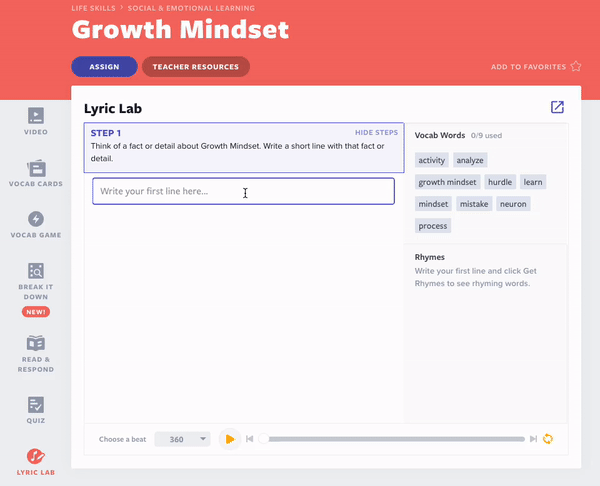
3. Help identify just-right books
Teach your student how to identify books that are at their reading level. Everyone loves a challenge, but too much of a challenge can frustrate and deter emergent readers. This is especially important when teaching reading comprehension to students with learning difficulties. Model how to read the first page of a book and use the five-finger rule: The reader should count no more than five unknown words. Too many stumbles or interruptions will break the flow of meaning for struggling readers. You can use Fontes and Penell’s reading levels to label or group your classroom’s library books. Students will be proud of the progress they make throughout the year.
With just-right books and developmentally appropriate content, students can begin to cement fundamental skills around recalling key ideas and details, analyzing craft and structure, and integrating knowledge and ideas. Create a Flocabulary Mix lesson by combining a skill with a video text for some targeted practice.
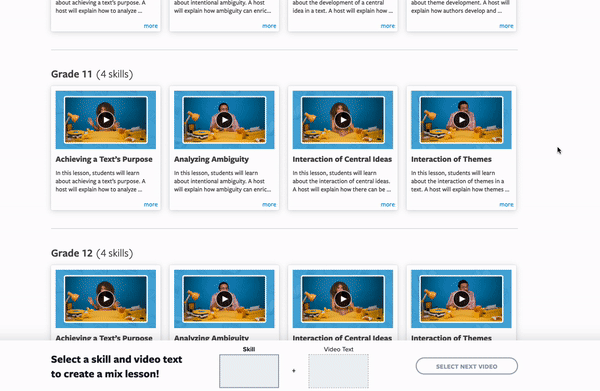
*Flocabulary Mix is only available to users with a Flocabulary Plus subscription.
4. Expand your classroom library
Expose your readers to various genres of literature—from fiction (like fantasy) to poetry (whether rhyming or free verse) to nonfiction and expository text. Help your students begin to develop a personalized love of reading, whether that be for the spine-tingling descriptions of a mystery, the lyrical verse of a sonnet, or the mind-blowing facts of history.
Flocabulary excels in storytelling through engaging video lessons that cover a diverse range of literary genres, ensuring students are exposed to a rich tapestry of literature while boosting their vocabulary, comprehension, and reading skills. Watching these videos during your reading comprehension lessons can help students understand the types of genres, authors, and plot lines that interest them.
Here are some Flocabulary lessons about genres to accompany your instructional strategies for reading:
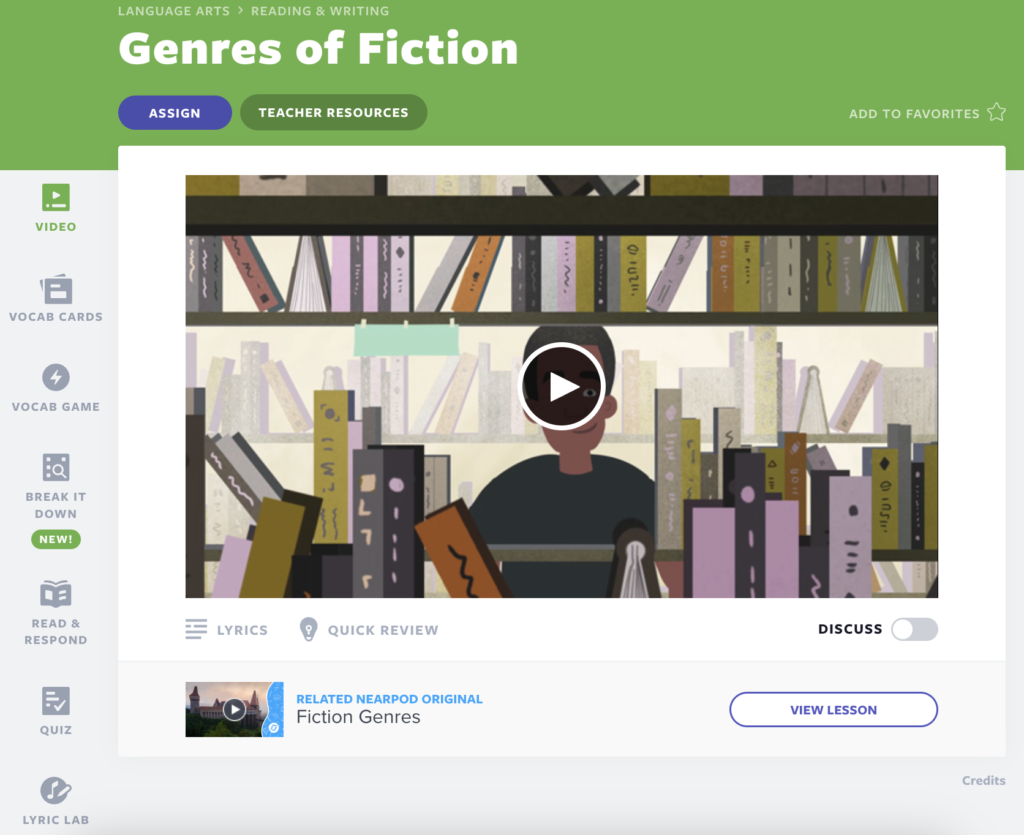
- Genres of Fiction: This song explores the genre of fiction and teaches the characteristics of its different subgenres.
- Fiction vs. Nonfiction: This song teaches the difference between fiction and nonfiction and provides several examples for each.
- What Is Drama?: This lesson teaches the parts of a play and what goes on onstage and behind the scenes. They’ll learn the elements of drama and the major differences between drama, stories, and poetry.
- What is Poetry?: In this lesson, students learn what a poem is and see how poetic language can take us beyond literal meaning.
5. Reread!
Encourage your students to reread stories again and again. This is the most essential and best way to teach reading comprehension. Such practice will help increase fluency. With familiarity, they can begin to focus on nuances such as tone when reading dialogue, or expression when interpreting more sophisticated punctuation. When a child can read with appropriate intonation, it often highlights how well they are comprehending what they are reading. Students will gain confidence each time they reread, and they will enjoy the rigor as well as the fun.
6. Model how to visualize meaning
Practice with your students how to visualize what is represented by the written word. Use descriptive text to encourage your students to use their “mind’s eye” to picture the meaning behind the words. You can use graphic organizers to help them strengthen different learning styles.
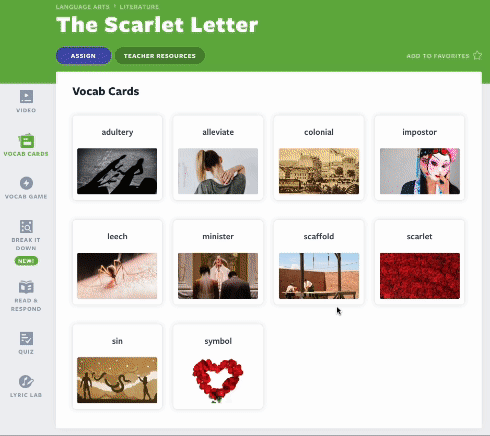
If you’re using a Flocabulary lesson, have students complete the Vocab Cards activity portion of the lesson sequence. These cards will include vocabulary words from the video. Students will read the definition and can then write a sentence and draw an image to describe the word. You could also play the song from the Lyrics page, which is audio and lyrics only, and have students draw what they see with their “mind’s eye.” Then, play it again with the video on for students to compare what they visualized to what the Flocabulary team created.
7. Sequence events
To assess how well students comprehend a story, have them summarize the main events and put the plot’s key details into chronological order. You can start with a simple beginning, middle, and end sequence and then evolve into asking for more specifics about the story’s conflicts. Sequencing events challenges one’s ability to recall as well as one’s ability to comprehend. Split students into small groups or set it up as independent work.
Here are some Flocabulary lessons you can use to teach this skill and strengthen students’ reading ability:
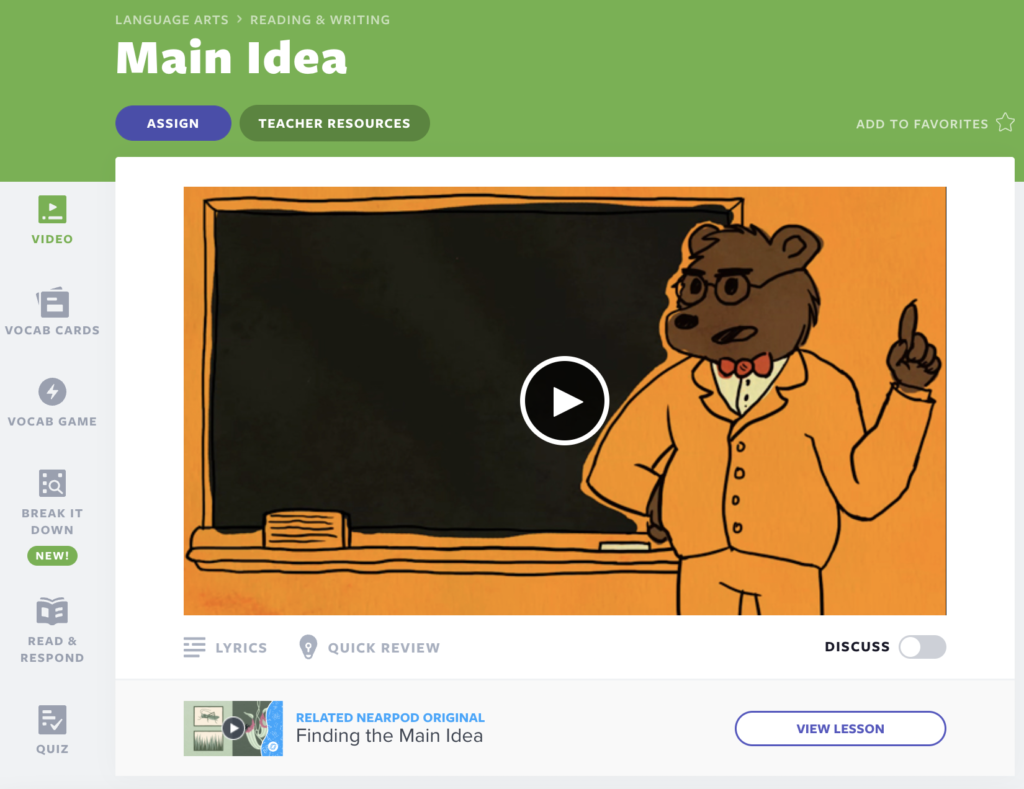
- Sequence: In this lesson, students will learn to identify the sequence of events in fiction and nonfiction text.
- Main Idea: This song teaches students how to identify the subject, main idea, and details of a passage.
- Characters: This video teaches how to identify a character’s traits using their words, actions, thoughts, and feelings and the reactions of other characters.
- Five Elements of a Story: This song covers the five main elements of a story: setting, plot, characters, conflict, and theme.
- Plot Elements: This song teaches students how to identify the plot elements of a story, including the introduction, rising action, climax, falling action, and conclusion.
8. Lean on graphic organizers
Help your students make sense of the story by compartmentalizing the information into a visual format. There are so many to pick from or create! Graphic organizers can support readers in articulating their thought processes. Students can use graphic organizers to categorize information and fit ideas together. Concept maps, storyboards, Venn diagrams, K-W-L charts, and idea webs are all examples of graphic organizers that can be used across the curriculum for teaching kids.
If you’re searching for bite-sized videos to have students watch to complete their graphic organizers, Flocabulary also offers Nearpod Original videos. Nearpod Original videos are animated or hosted explanatory videos covering various topics and skills, which are perfect to use as support for your instructional strategies for reading.
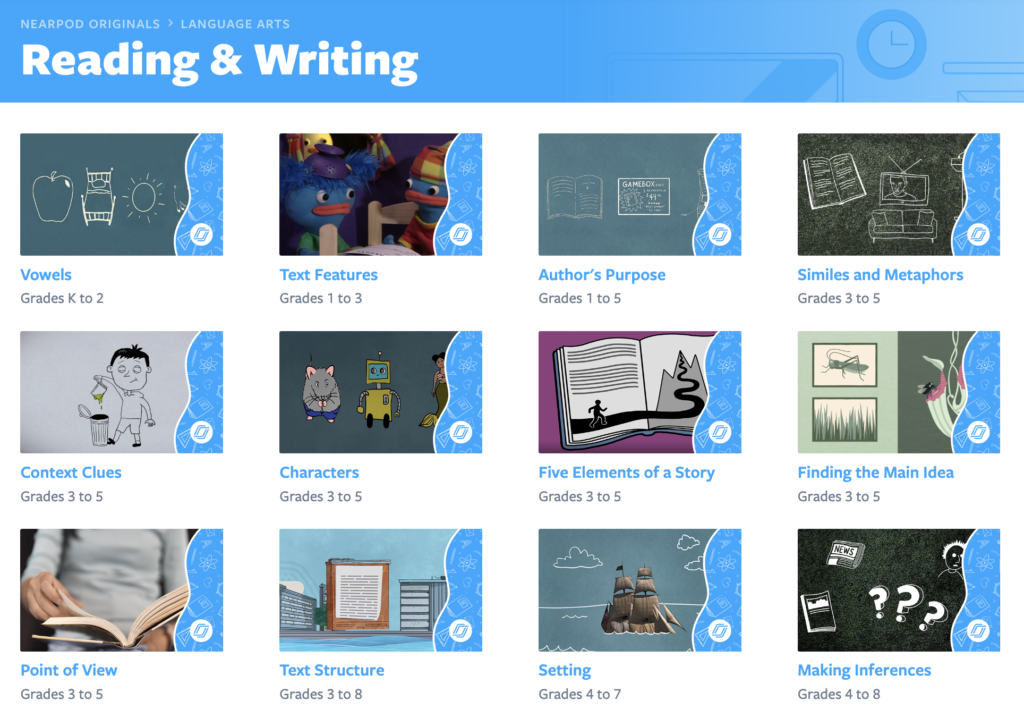
*Nearpod Originals are only available to users with a Flocabulary Plus subscription.
9. Ask questions, lots of questions!
Ask a range of questions across the levels of Bloom’s taxonomy to build higher-order thinking skills. You can start with a simple recall of details and work up to asking students to summarize the text’s main idea. Encourage them to ask meaningful questions of one another to assess their understanding of the story’s elements: characters, setting, and plot. They can close-read the text and reread it for specific information or evidence. You also can challenge them to not only retell a story in their own words but to create a new ending to a familiar story (fairy tales work well) when answering questions.
Explore Flocabulary’s Read & Respond, an activity in every Flocabulary lesson that provides short reading passages with practice multiple-choice questions that mirror the format of high-stakes tests. The Quiz activity of the lesson sequence also asks students multiple-choice questions about the lesson content. Break It Down is ideal for teaching students comprehension, including multiple-choice and open-ended questions, and allowing students to find evidence from the video to support their answers.
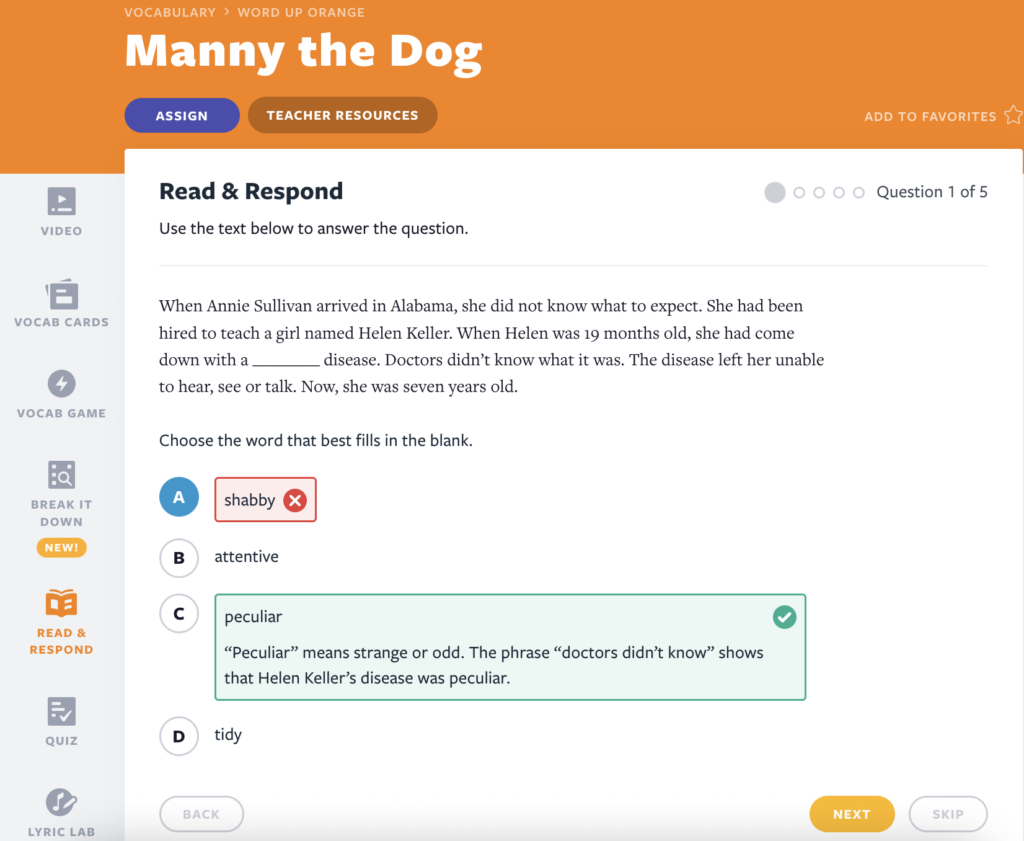
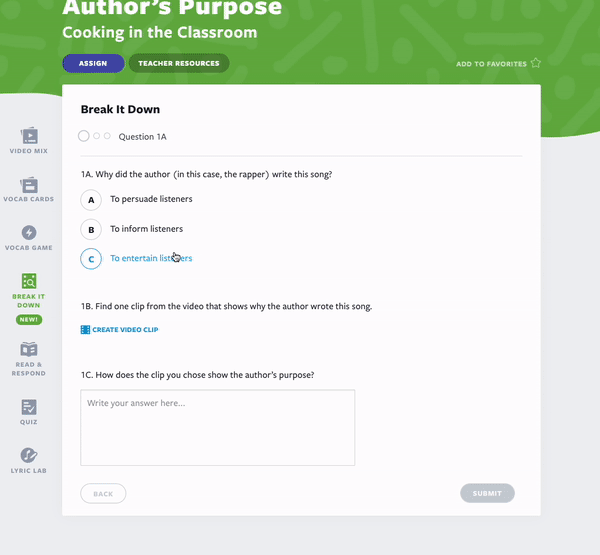
*Break It Down is only available to users with a Flocabulary Plus subscription.
10. Develop a love of storytelling
Encourage book knowledge by familiarizing students with how a book works, from the title page to the final “THE END.” Pepper your readers with questions about the process of reading: What do they predict? Which parts do they enjoy? Which words befuddle them? How would they have written elements differently? Similarly, introduce them to the structure of a story—from the basics of a beginning, middle, and end to the more sophisticated story arc of conflicts, climax, and resolution. When teaching kids, help them deconstruct books so they build a love of reading.
Here are some original short fiction stories told through Flocabulary Mix Texts* that are only available on Flocabulary:
- Dumplings: Yoojin finds a surprise in her lunch box.
- When Pigs Fly: The main character is on a mission to make his next-door neighbor’s pig fly.
- The Teachers’ Lounge: Students have theories about what goes on in the teachers’ lounge. It’s all a mystery until one of them gets a chance to go inside and check it out.
- Pit: When Max discovers a cryptic message from his best friend, he realizes that things are not always what they seem to be.
*Flocabulary Mix is only available to users with a Flocabulary Plus subscription.
Start using Flocabulary to teach reading comprehension
The Science of Reading takes into account decades of research. This research continues to contribute to strengthening explicit instructional strategies for reading that will help develop strong readers. While books are essential, there are other ways to instill a love of reading, as showcased by Flocabulary’s vast and diverse library of video lessons. Reading comprehension is fundamental not only to literacy success but to school success.
New to Flocabulary? Teachers can sign up for a trial to access our lesson videos and assessment activities. Administrators can get in touch with us to learn more about unlocking the full power of Flocabulary through Flocabulary Plus.

